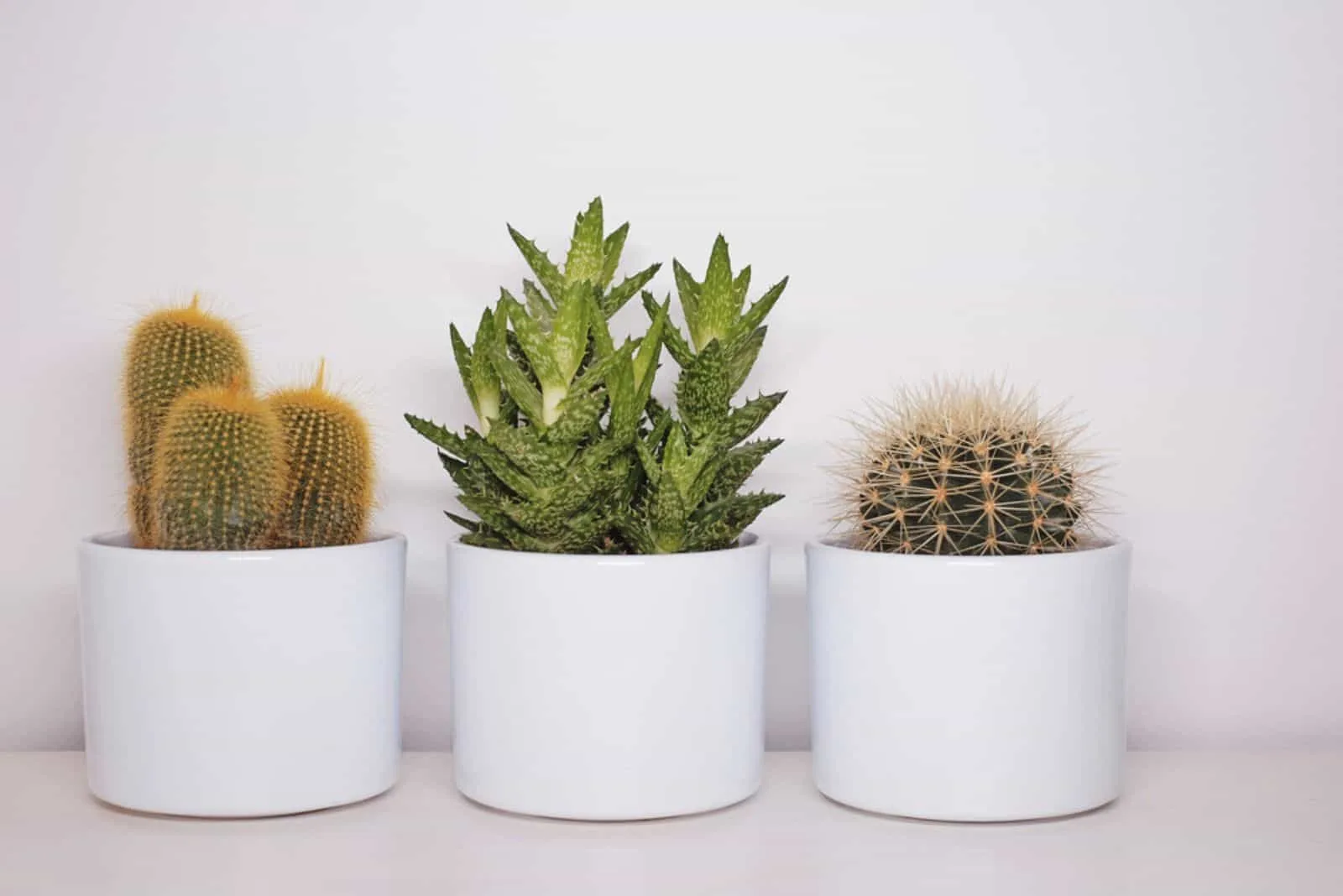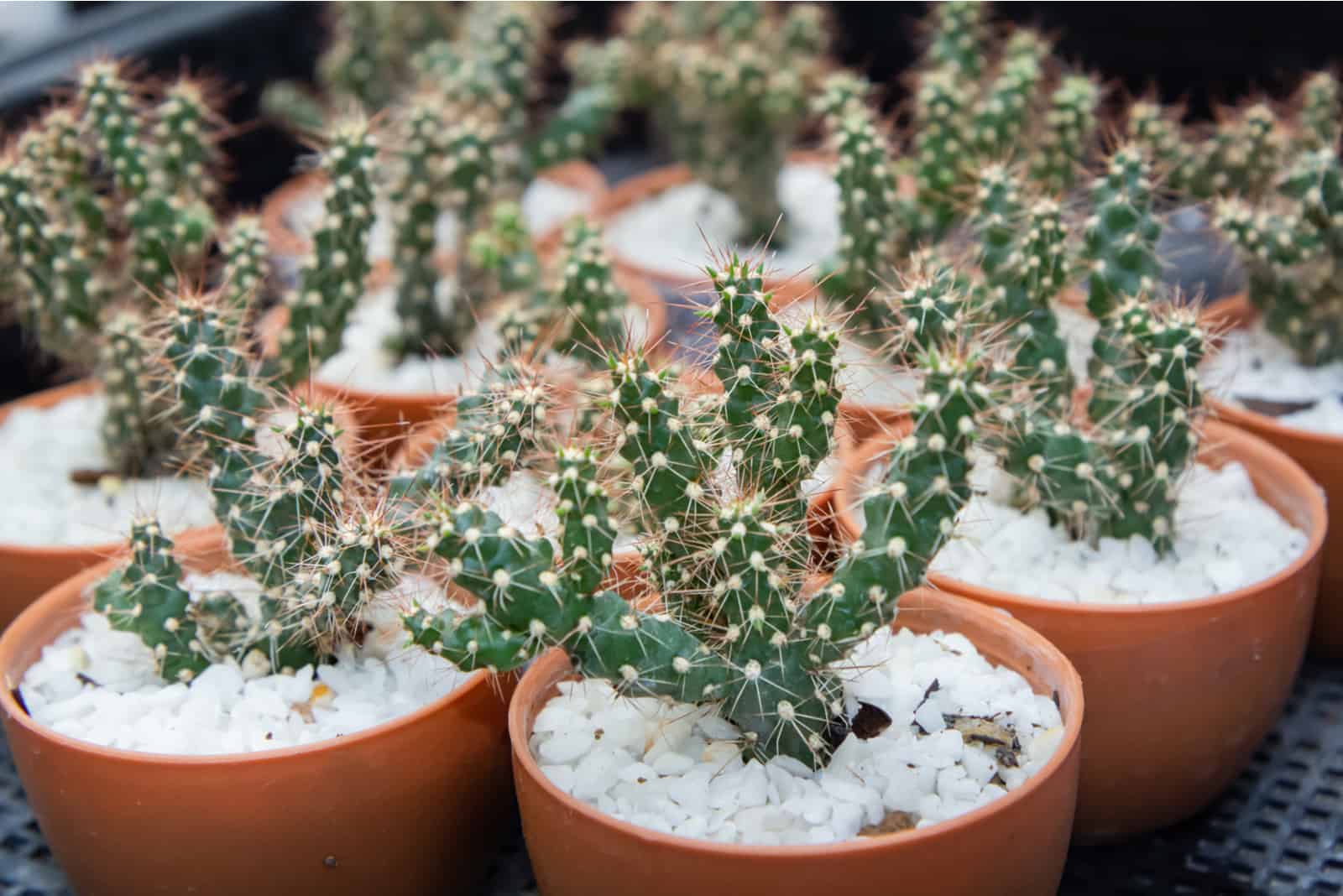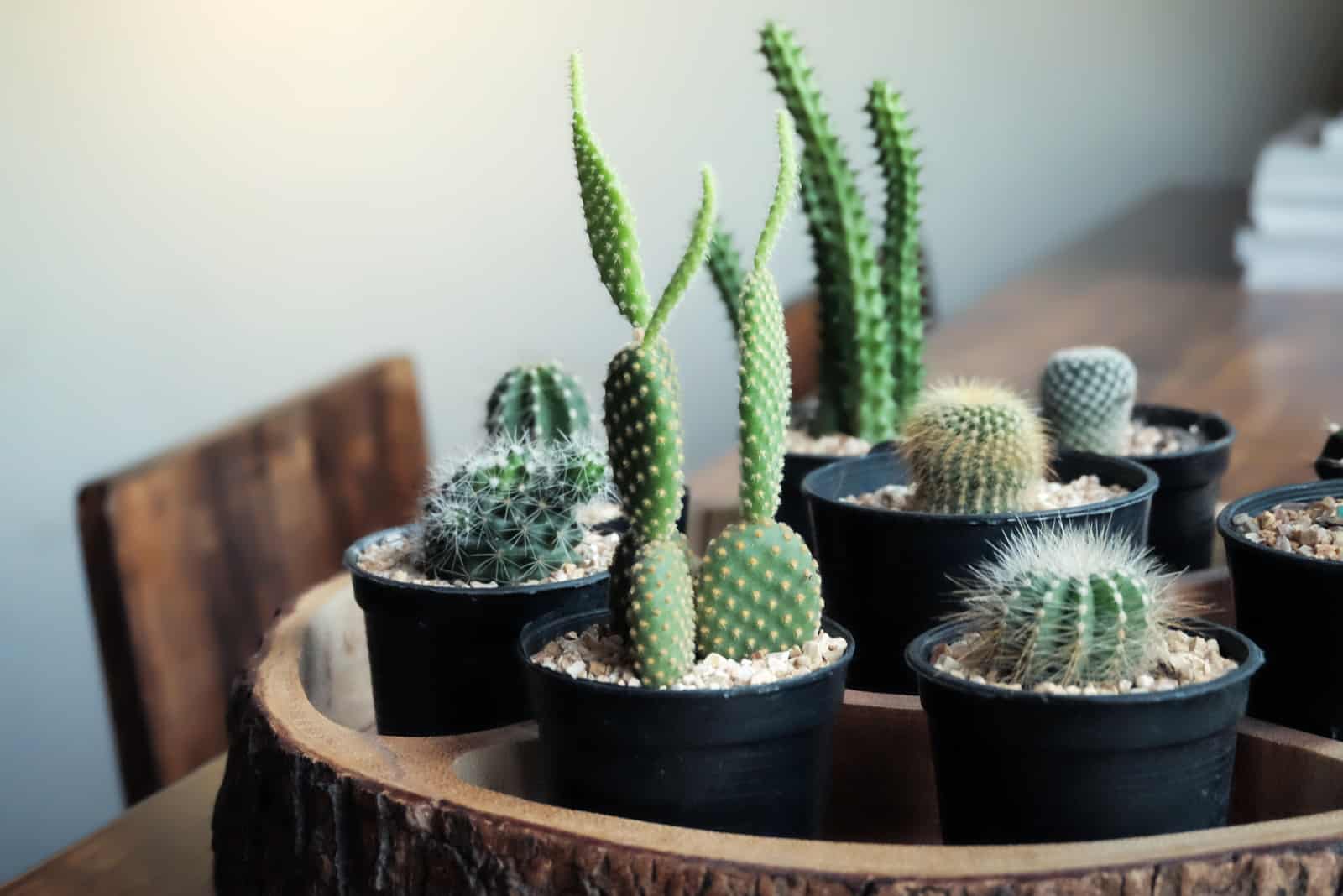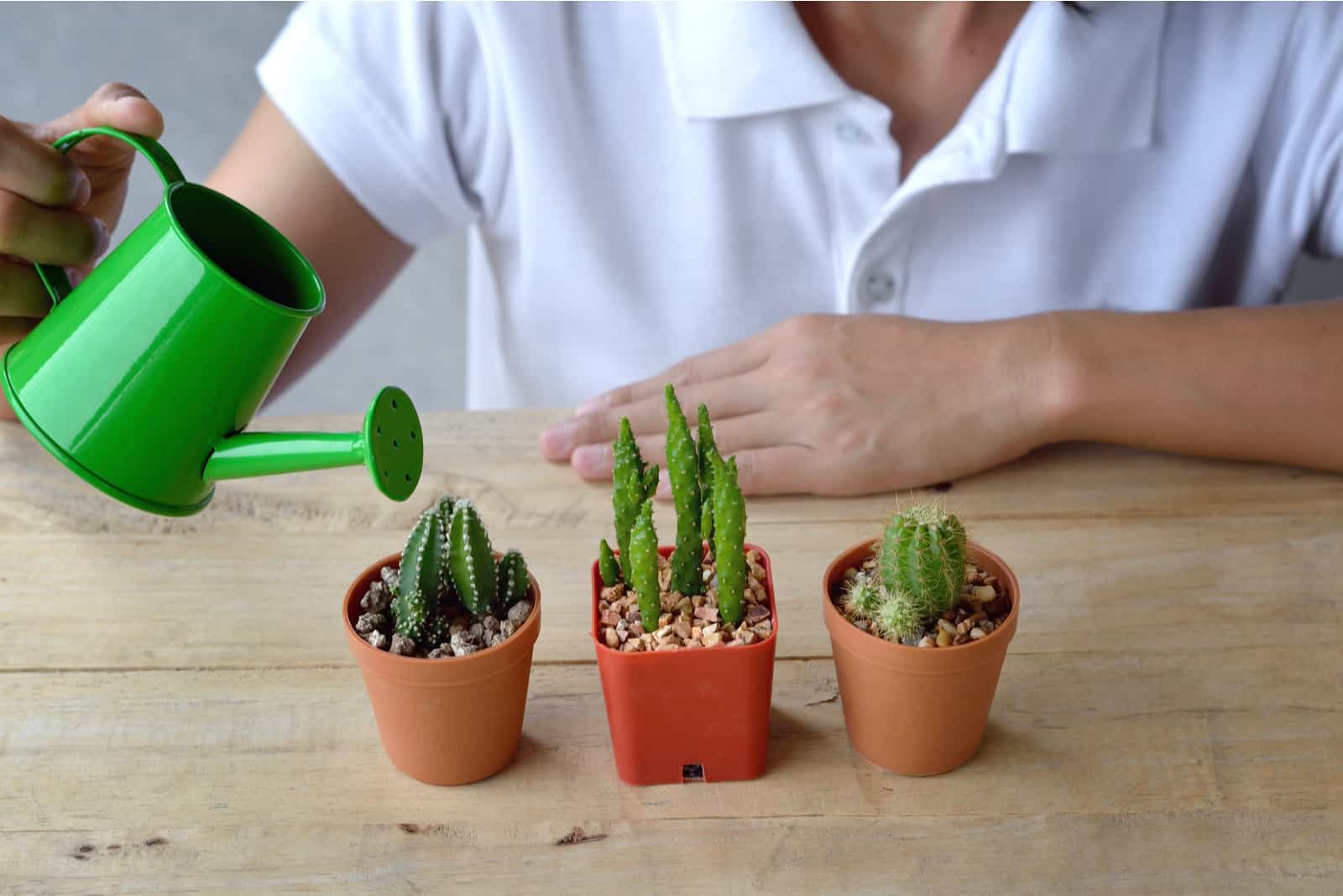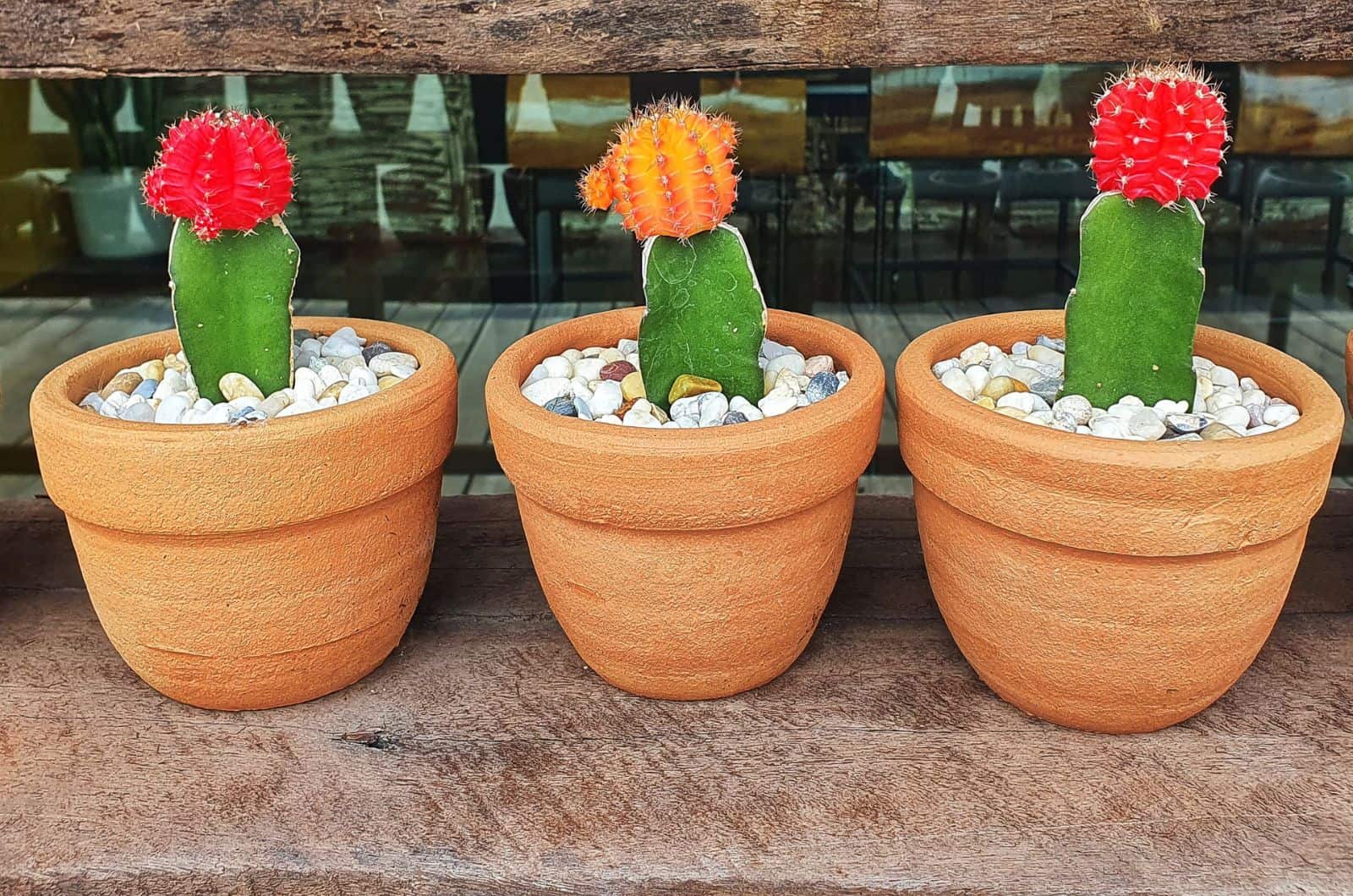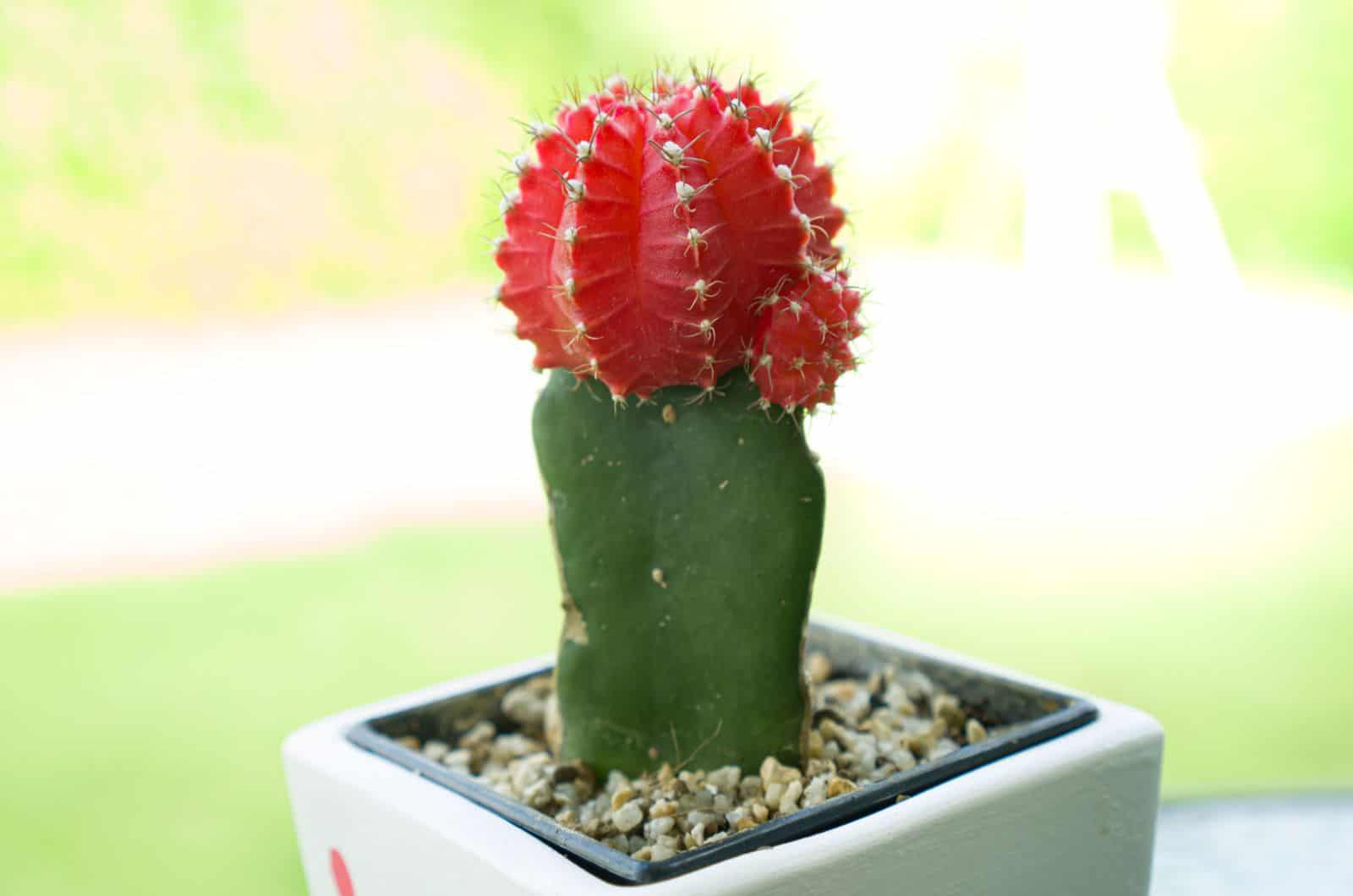Cactuses and succulents are the favorite houseplants of busy gardeners because they don’t demand too much care, although plenty of light and occasional watering is still required.
When it comes to how often to water cactus, you have to be sure you don’t over or underwater it at the same time.
There are some things that determine how often you should water your indoor cactus, such as its size, the size of the container, the type of soil, humidity levels, and light exposure.
Therefore, some cactuses will have to be irrigated more frequently than others based on the conditions in your region and home.
Of course, if you don’t feel like doing this math and planning, you can always go with the flow and water your plant when it needs to (Don’t worry, we’ll introduce some common signs that a cactus needs more moisture).
Furthermore, you cannot (or rather, you shouldn’t) just pour water into the potting soil and be done with it. There are some tips for irrigating cactuses, such as what type of water to use, what amount to use, etc., and we’ll discuss the best watering technique as well.
Finally, inadequate watering may lead to root rot or your plant drying out, so we’ll include some tips that can help you save it.
Let’s get started!
What Determines How Often To Water Cactus Indoors?
Finding the perfect cactus for you and deciding on the best funny cactus names is a hard part of growing this indoor plant!
It doesn’t have any special needs as long as it gets light and isn’t drowning in water.
We don’t have to worry about lighting either; a well-lit windowsill is all this plant needs. However, the amount of water we need to give it is another story.
So, how do we decide how often we should irrigate an indoor cactus? What determines its water requirements?
Find out below!
Indoor Cactus Size
One of the main things that affects the frequency of cactus watering is the size. The logical train of thought here is that larger cactuses require more water.
However, that’s not the case with these plants.
It’s actually the small cactus (or rather, young plants) that requires more water than the larger ones because they grow and develop faster.
Actually, you will give your larger cactuses more water, but you have to irrigate them less frequently than the younger ones.
Cactus Plant Variety
Not all cactuses require the same amount of moisture for proper development. For instance, arid or desert cactuses, like the prickly pear or barrel cactus, require less water than tropical varieties such as the Christmas cactus.
Therefore, you should first research the type of cactus you own so that you don’t give it too little or too much water, as that can lead to serious issues.
Type And Size Of The Container
There are several ways to choose the best container for your cactus, but it definitely needs drainage holes. Try to find a pot with a lot of holes to best prevent water-clogging and keep your cactus safe from overwatering.
However, sometimes holes in the bottom of the pot aren’t enough, especially if the container is too big for the plant.
Large pots contain more potting soil and more moisture, so the plant won’t need to be irrigated more than every month and a half.
On the other hand, water will evaporate from smaller pots more quickly. The plant uses it all up sooner simply because there’s less water in a smaller container.
You might want to choose a larger pot to make your job a lot easier, but cactuses actually prefer smaller pots. These plants don’t like sitting in water as it can quickly lead to root rot, so choose a container that’s just big enough for your plant to fit.
Furthermore, the material the pot is made of is also important because different materials act differently when they come into contact with moisture.
For instance, a plastic container will hold much more water than a terracotta pot. The latter is more porous, so the water drains and evaporates more quickly.
Temperature
Temperature definitely affects the frequency of watering your cactus plant. For instance, you’ll have to irrigate your spikey friend approximately once a week during the summer months if you live in a hotter region.
However, once the temperatures cool down a bit and the winter months arrive, this plant can easily survive being watered every six weeks.
Heat increases the evaporation rate, but it also makes your plant grow faster, so it uses up much more water in the summer than in winter.
Don’t worry if you forget to irrigate this plant as soon as the soil dries out because cactuses are fairly drought-tolerant and can tolerate being underwatered quite well.
Humidity Levels And Air Circulation
Even though we don’t think of cactuses as humidity-loving plants, this factor still plays an important role when it comes to watering.
Drafty locations, such as near AC vents, heaters, and bad windows, have lower humidity, so the water from the soil will evaporate much more quickly.
On the other hand, higher air moisture slows down evaporation, which means you’ll have to water your cactus less frequently.
However, desert cactuses prefer drier climates, so if you live in a humid region, you should grow this plant indoors and water it a lot less frequently.
Type Of Potting Mix
One of the things that can help you best avoid an overwatered cactus is a well-draining soil. Luckily, there are lots of excellent ready-made cactus soil mixes available in local garden stores or online.
However, if you prefer making your own soil, you can simply mix equal parts potting soil and sand, and then add some perlite or pumice to make it even more draining.
Of course, this type of potting mix will require more frequent irrigation, but at least your plant won’t have to spend long periods in waterlogged containers.
Light Exposure
Cactuses are low-maintenance plants that require just a little water for a healthy life. However, sun exposure is equally important because the plant won’t be able to photosynthesize and produce the resources necessary for further development without it.
These prickly plants can tolerate direct sunlight pretty well (plenty of them are desert plants), but in that case, you will have to irrigate them more frequently because the water will evaporate faster.
Of course, too much direct sunlight can still burn them, so you should keep them on east-facing windowsills. They will still get enough sunlight without having to water them every couple of days.
Season
The general rule of thumb is to water your plants more frequently during their growing season than their dormancy, and the same goes for cactuses.
Cactuses actively grow and develop only during their growing season and then go into a deep sleep over winter, when they slow down their growth and development.
Therefore, it doesn’t need as many nutrients and moisture during dormancy. In fact, a summer watering schedule would definitely lead to overwatering during the winter months, and your plants would only suffer.
Of course, you should also consider the lifespan of the moon cactus (or any other variety for that matter), as they might not live for too long (usually between 2-3 years).
This means that their death might not have anything to do with how you watered them during the warmer and cooler months.
How Do You Know When A Cactus Needs Water?
Now that you know the different factors for determining a water schedule for your cactus, it’s time to learn how to monitor your plant, so you water it only when it needs more moisture.
The most basic test for checking whether your plant needs more water is to stick your finger into the potting soil. If the growing medium is still damp, you should wait a couple of days before watering.
However, you can also use a soil moisture meter if you prefer not to get your hands dirty.
Of course, one way is to let your plant get slightly thirsty. The cactus will start to wrinkle, which is a clear sign that it needs more water.
But don’t worry, cactus and succulent plants store water in their stems and leaves, so they can last a long time without it!
If you want a rapidly-growing cactus, you should adjust the watering schedule so that you don’t overwater or underwater it. You can also consult a list of the fastest-growing cactus plants.
The Best Watering Technique For Cactus Care
Simply pouring water into the cactus mix is not the best way to hydrate these plants.
There are a couple of golden rules for watering cactuses, and they include a specific watering method and the type and amount of water you use.
One of the best ways to irrigate your cactuses is with the so-called soak and dry method. You simply have to water your cactuses and then wait until the soil is mostly dry before watering them again.
This method will help your cactus store water and survive prolonged drought periods if you forget to irrigate it or you go on a vacation.
Be careful about the amount you use. The best way is to irrigate the cactus slowly until you notice that the excess water has started to drain through the potholes. Let the moisture drain completely, empty the saucer in less than half an hour, and then put your plant back into its usual place.
Finally, not every type of water is suitable for your plants. For instance, tap water contains too much chlorine, which can lead to mineral build-up and disrupt the normal uptake of moisture and nutrients.
Therefore, rainwater or distilled water are the best choices to support a healthy cactus. You can use tap water, but you should leave it in the air for approximately 24 hours before using it so that the chlorine can evaporate.
How To Deal With Overwatering And Root Rot
A cactus is a perfect plant for beginners because it doesn’t require a lot of water or frequent irrigation to thrive.
However, we might sometimes forget this and give our plants more moisture than they need, which can lead to overwatering.
It isn’t a big deal to overwater your cactus once, but if its roots are constantly drowning in water, it will lead to root rot, which is a serious disease.
This fungal infection can be fixed if you catch it in time, which is why you should monitor your plant and act as soon as you notice the signs.
Some of the symptoms of root rot are stunted growth, wilting and drooping, discoloration, and soft plant parts.
If you notice any of these signs, you should check the soil, and if it’s wet, you must take your cactus out of the pot and examine its roots immediately.
If the cactus roots are dark and mushy, you should remove them, spray the rest of the roots with a fungicide as a precaution, and repot your plant into a new container filled with fresh, well-draining soil.
Remember to use just enough water to avoid the plant wrinkling, and it will thrive like never before.
What To Do About An Underwatered Cactus?
One of the main reasons that your cactus is turning black is because it’s not getting enough water. However, overwatering is the most common cause, so always check the soil before doing anything you might regret later.
Cactus growing is not difficult, you just have to water it whenever the soil has mostly dried out.
But if you forget to give it water for quite some time, there are a couple of things you can do.
First, remove all the damaged parts (stems and leaves that have turned brown) so that your plant doesn’t waste more energy on them.
Then irrigate the plant. However, the soak and dry method won’t work here, so don’t grab your miniature watering can just yet.
Thankfully, there is another technique that’s perfect for this situation. Fill the saucer in which you place the pot and let the soil slowly moisten up from the bottom.
Your plant should be up and running in a couple of days, but if it doesn’t show any signs of improvement, it means something else is the problem, so you should examine its roots.
Finally, if the soil is too porous and the water can’t stay in it long enough for the plant to use it, you should repot your cactus into a different growing medium, such as a cactus mix.
Final Thoughts
This article discussed the main things that can help you determine how often to water cactus.
For instance, cactus type and size, pot size, and the conditions in which you grow your plant are all factors that can help you decide on the frequency of cactus watering.
However, you cannot just take some water and splash it onto the soil. You’ll have to wait until the soil is mostly dry to irrigate your plant, and you should use chlorine-free water, such as distilled or rainwater.
Finally, we can always make a mistake and either over or underwater our cactus plant. Thankfully, there are some ways of dealing with these conditions, and we examined them more closely in the paragraphs above.
Good luck with your cactus, and until next time!
Like this post? Share or pin it for later!

